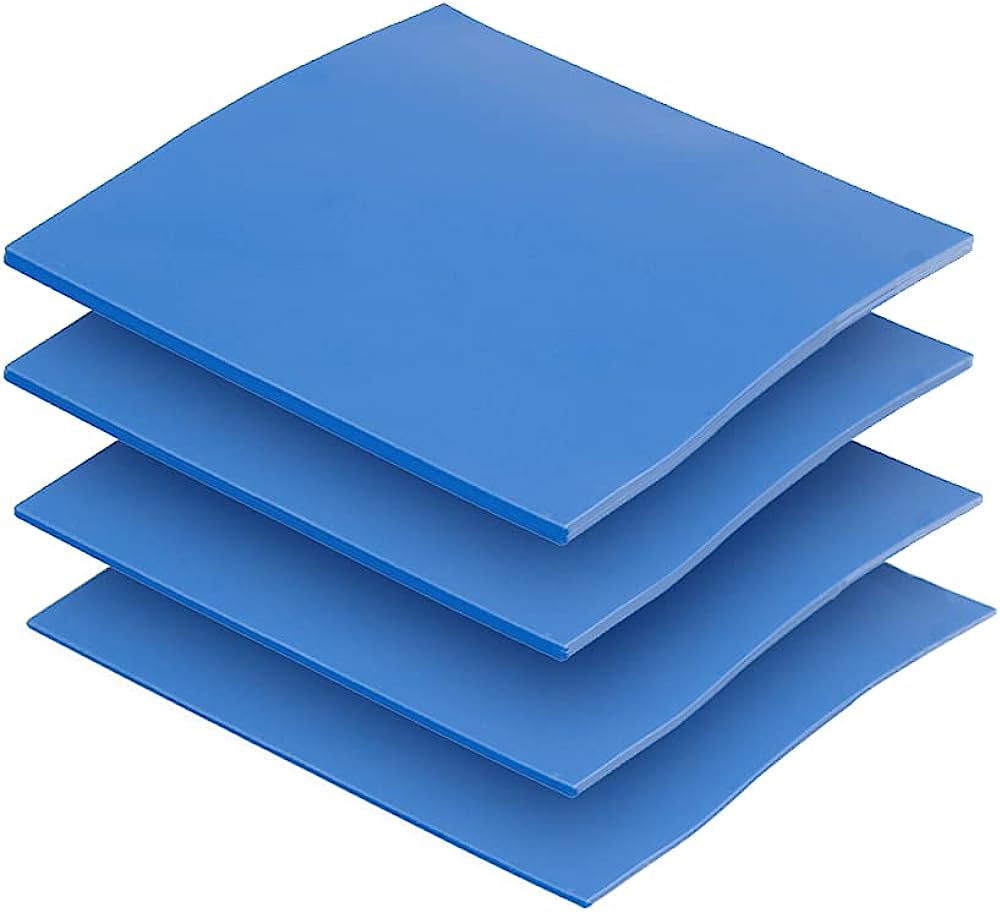In the realm of maintaining efficient heat dissipation in your computer system, thermal pads play a pivotal role by bridging the gap between heat sinks and crucial hardware components. The selection of an appropriate thermal pad involves a careful consideration of various factors, including thickness, hardness and orientation. This article delves into the significance of thermal pad thickness, offering insights into how this factor impacts cooling efficiency and providing guidance for choosing the right thickness for different components.
Understanding the Impact of Thermal Pad Thickness
The thickness of a thermal pad directly influences the effectiveness of heat transfer and overall cooling performance. Thermal pads are commonly available in thicknesses of 0.5mm, 1mm and 1.5mm. The right choice of thickness depends on the specific hardware components you’re working with, as well as the design of the heat sink and the intended application.
Ensuring Proper Contact and Uniformity
Hardware components, such as graphics cards and NVMe SSDs, often feature varied heights due to the intricacies of design by different manufacturers. These variations make the use of thermal pads essential to establish a uniform and consistent contact surface between components and the heat sink. A thicker thermal pad ensures a larger contact area, facilitating better heat dissipation. Conversely, a pad that is too thin might lead to incomplete contact and suboptimal cooling performance.
Balancing Thermal Conductivity and Pad Thickness
It’s crucial to strike a balance between thermal pad thickness and it’s conductivity properties. While thicker pads provide increased contact, they might hinder the dissipation of heat due to lower thermal conductivity. Achieving the right equilibrium between pad thickness and conductivity is vital for achieving efficient and effective cooling. Additionally, the hardness of the thermal pad also plays a role in optimizing cooling solutions. Opting for a pad with moderate softness ensures proper compression and contact without causing damage to delicate components.
Adapting Thermal Pads for Specific Components
Thermal Pad Thickness for NVMe SSDs
NVMe SSDs benefit from thermal pads that aid in transferring heat from components like NAND chips and controller chips to the heat sink. Generally, 1mm or 1.5mm thermal pads are recommended for NVMe SSDs, as they establish an optimal balance between contact and heat transfer. However, the challenge arises when dealing with variations in chip heights. Utilizing a combination of thermal pads with different thicknesses, such as 1mm and 1.5mm, can effectively address these differences, ensuring proper contact and efficient heat dissipation.
Thermal Pad Thickness for Graphics Cards
Graphics cards introduce a layer of complexity due to the diverse components they encompass, including Voltage Regulator Modules(VRMs) and Video Random Access Memory(VRAMs). High-end GPUs may require thermal pads of varying thicknesses to effectively cool components with differing profiles. Determining the appropriate thickness for each specific component involves referencing manufacturer specifications or consulting resources like thermalpad.eu, which compile such data. In instances where precise data isn’t available, combining manufacturer recommendations with testing can guide decisions.
Conclusion
Selecting the optimal thermal pad thickness holds the key to achieving efficient heat dissipation and maintaining the overall performance of your computer system. A delicate balance between the thickness of the pad, it’s conductivity properties and the unique profiles of hardware components ensures seamless heat transfer from the components to the heat sink. Whether you’re dealing with NVMe SSDs, graphics cards, or other critical components, tailoring the thickness of your thermal pads to meet specific requirements is essential for prolonging the lifespan and optimizing the efficiency of your computer system. By making well-informed decisions and factoring in various considerations, you can ensure that your cooling solution aligns with the demands of your hardware and usage patterns.
Other Technical Reviews:- Reviews








